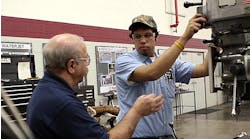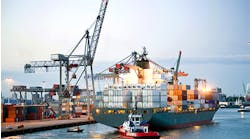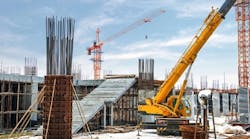Many operating standards and reliable predictions have been overturned in recent months, but it seems certain we are on course for another public debate about “infrastructure” spending. It will not be a debate about the merits or risks of spending enormous amounts of federal funds (certainly, much of it to be borrowed) on what will be explained as projects essential to our progress and security as a first-world nation. No, the debate will be about how much to spend — a debate that will not resolve any of the critical matters at issue.
Infrastructure spending remains an unquestioned good in the political world: one side will promote spending for the support it will bring to the economy, and another side will praise the virtue of investing in public works and community development. Their debate will be over whether to spend vast or vaster sums of money.
And there will be much invocation of the value of past infrastructure spending. The first citation in any such discussion will be the federal Works Progress Administration (later renamed the Work Projects Administration, or WPA), formed in 1935 and tasked with developing and overseeing thousands of large and small construction programs. These were not just the roads and bridges that are so commonly understood as WPA efforts, but also schools, municipal waterworks, and courthouses, hospitals, schools, and post offices. There also were parks and recreation centers, stadiums and pools, and many similar projects of less essential nature.
The historic impact of WPA is usually noted for the jobs that were created – jobs that in many instances were impossible without the prompting of some infrastructure spending — but understanding the real value of that spending would have to begin by calculating the economic opportunities created. For example, new roads provided the opportunity for more freight service, fueled demand for more vehicles, opened possibilities for real-estate development, and so on.
The point is that the WPA’s infrastructure spending did not succeed because it spent money, but because it spurred the growth of local and regional economies, and because those investments had prolonged, collateral effects that appreciated over time.
Such results may be even more clearly appreciated by a subsequent infrastructure spending effort, the Federal-Aid Highway Act of 1956. This was the progenitor of the interstate network that we all know and to a large extent overlook as an economic asset. Those roads (and bridges, tunnels, etc.) are evidence that infrastructure spending can have a positive economic impact.
The debate now should be whether any amount of spending (and borrowing) is sufficient to have that impact, and what projects will have the long-term, equity-creating value of past programs. Those questions were given very little attention the last time infrastructure spending became such a pressing topic, in 2009 when the $787-billion American Recovery and Reinvestment Act was approved. That “stimulus” sluiced federal money into projects already planned or underway, with much of the money diverted into favored projects of state and local officials. It failed in nearly every way that its proponents promised it would work.
Now, reportedly, President Trump will propose infrastructure-spending in excess $1 trillion, for roads, tunnels, and bridges, of course, but also to improve the nation’s electrical grid and water systems, and to rebuild airports. It may also include funding for Veterans Administration hospitals, and to expand broadband coverage.
There are good reasons to spend money on all these, but are we correct to consider it “infrastructure spending”?
We have institutionalized infrastructure spending. To propose now that massive outlays of government funds will spark economic growth is to ignore that public works projects are a significant, ongoing part of local, regional, and national economies. Roads, highways, bridges, etc., are being planned, built, and maintained, repaired, and replaced now. The engineers, contractors, and laborers active in those projects are in place, certainly willing to take on new work but unlikely to spur long-term economic expansion.
An even deeper concern is whether any amount of money can have the rewarding, unifying effects that past investments have provided. Are we “investing” to acquire what we cannot otherwise have, and to create the foundation for future opportunities for prosperity and security? Or, are we anxious to spend because there is nothing else that this fractured civilization can agree to do together.









